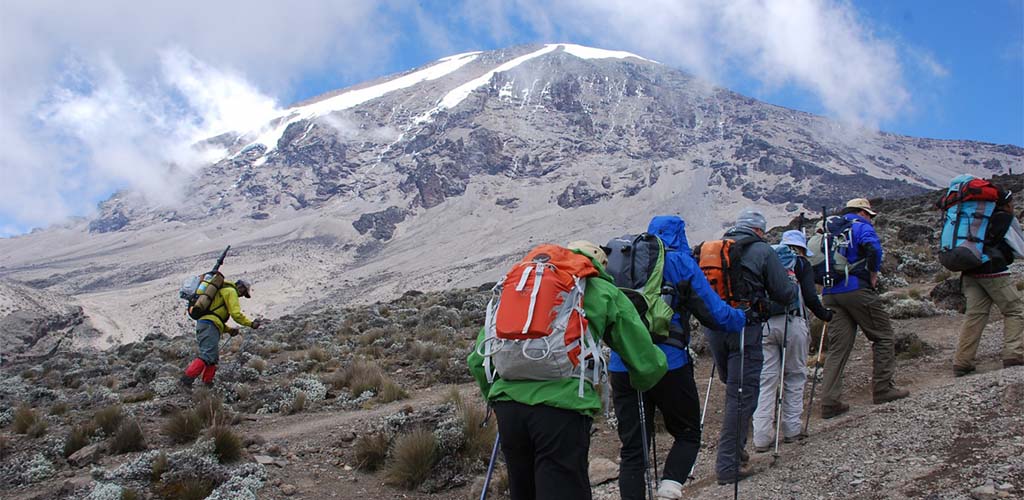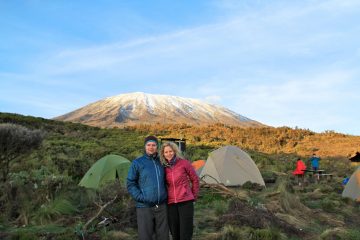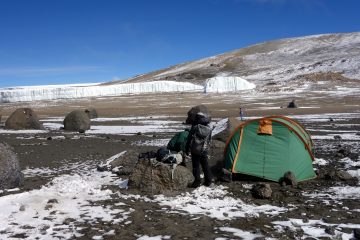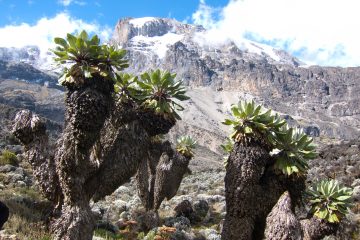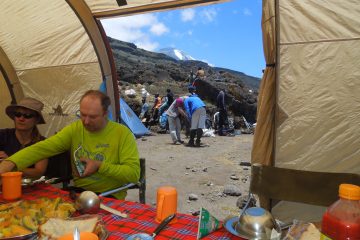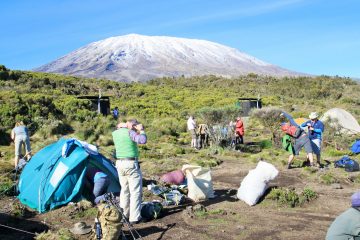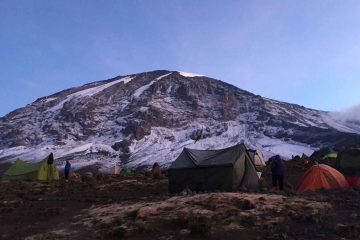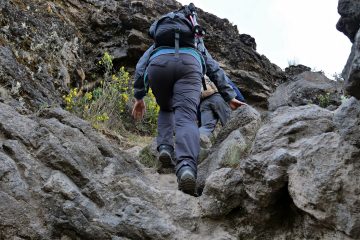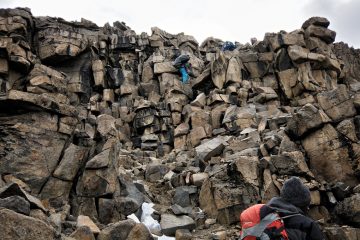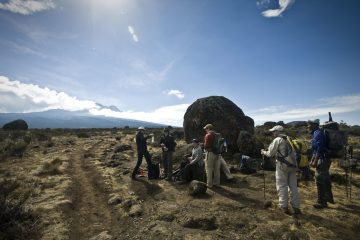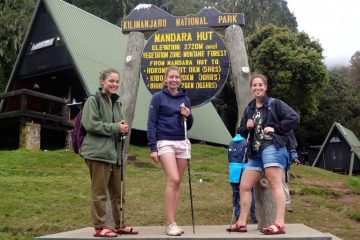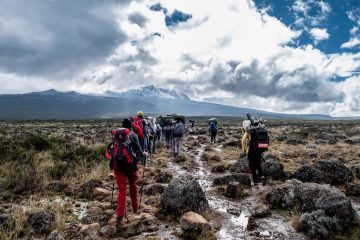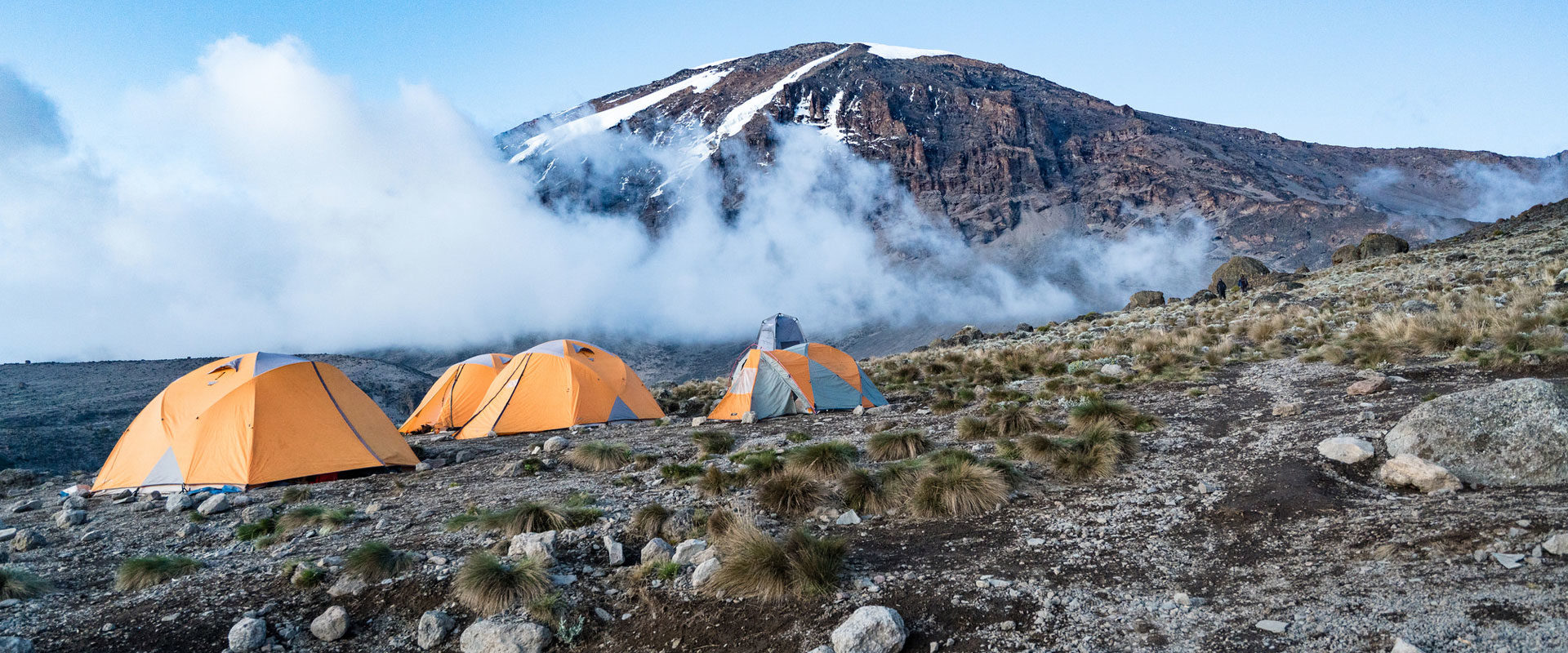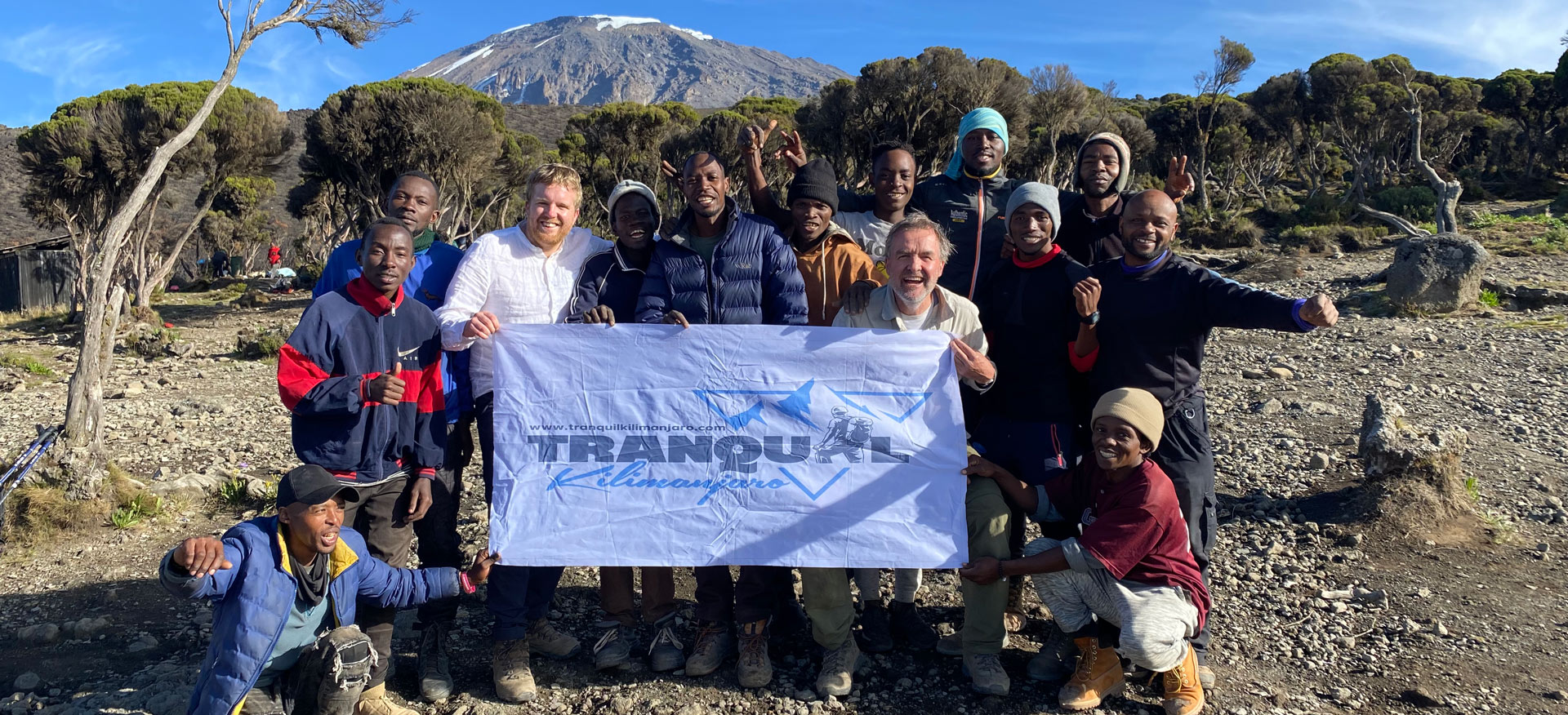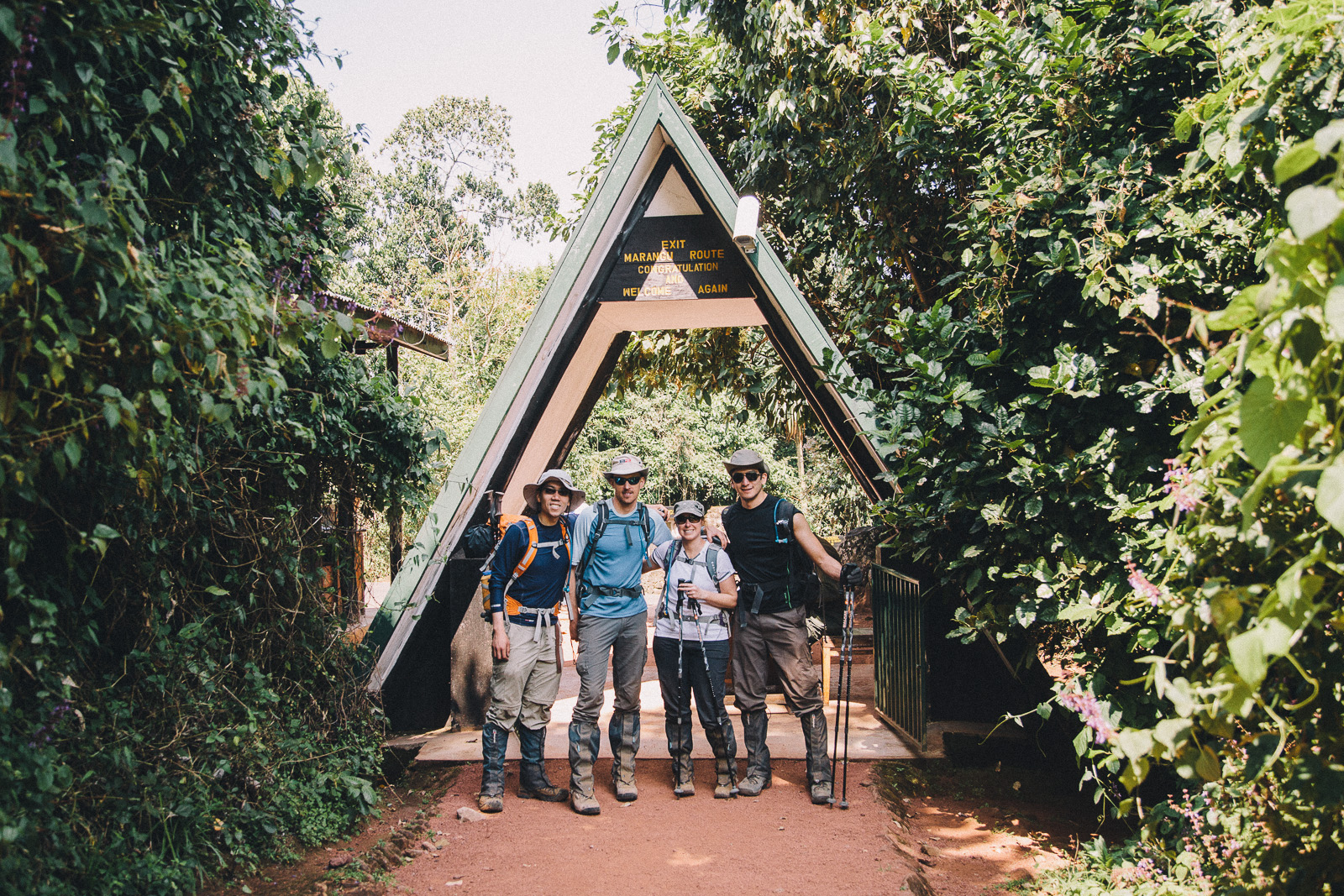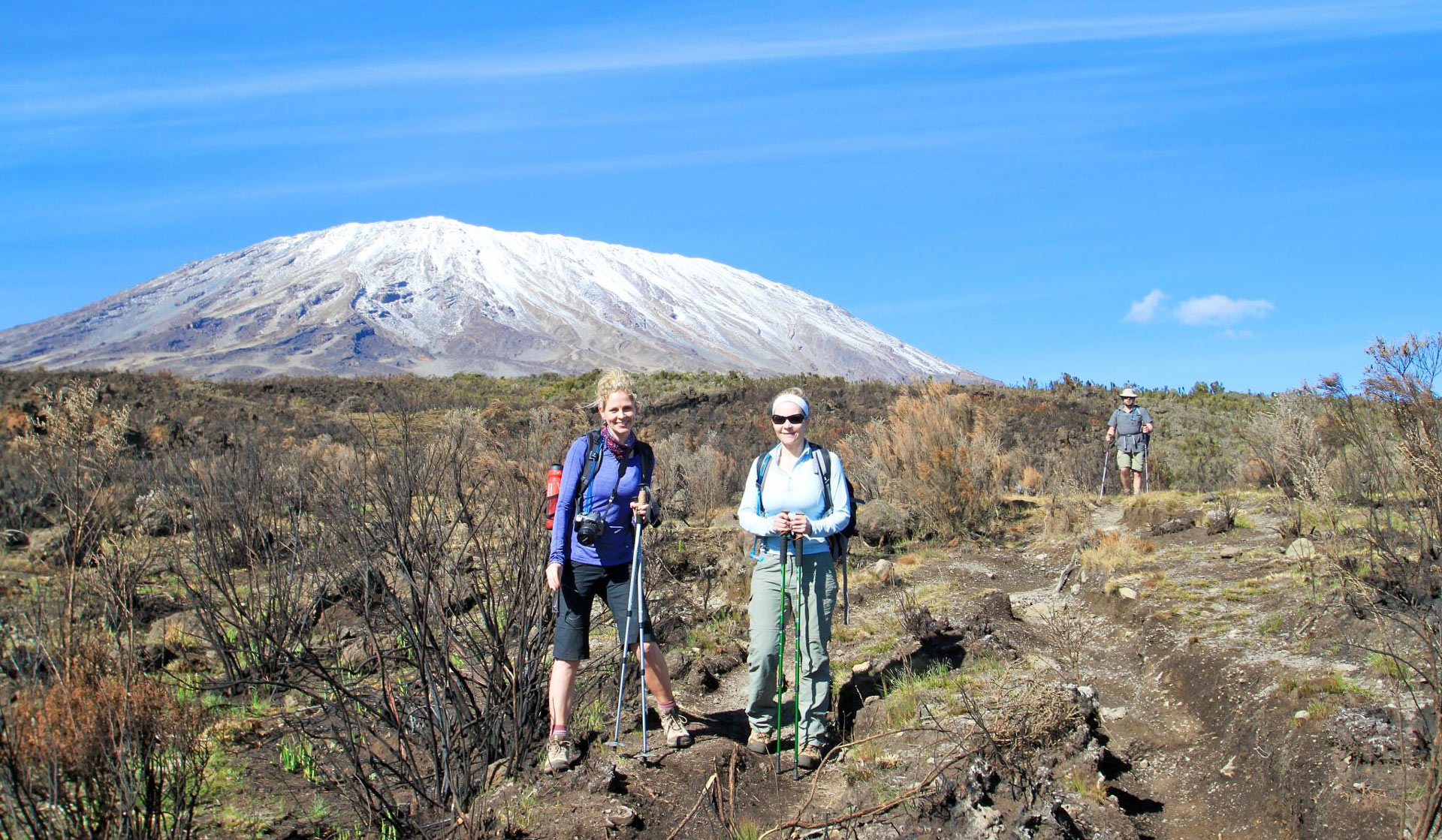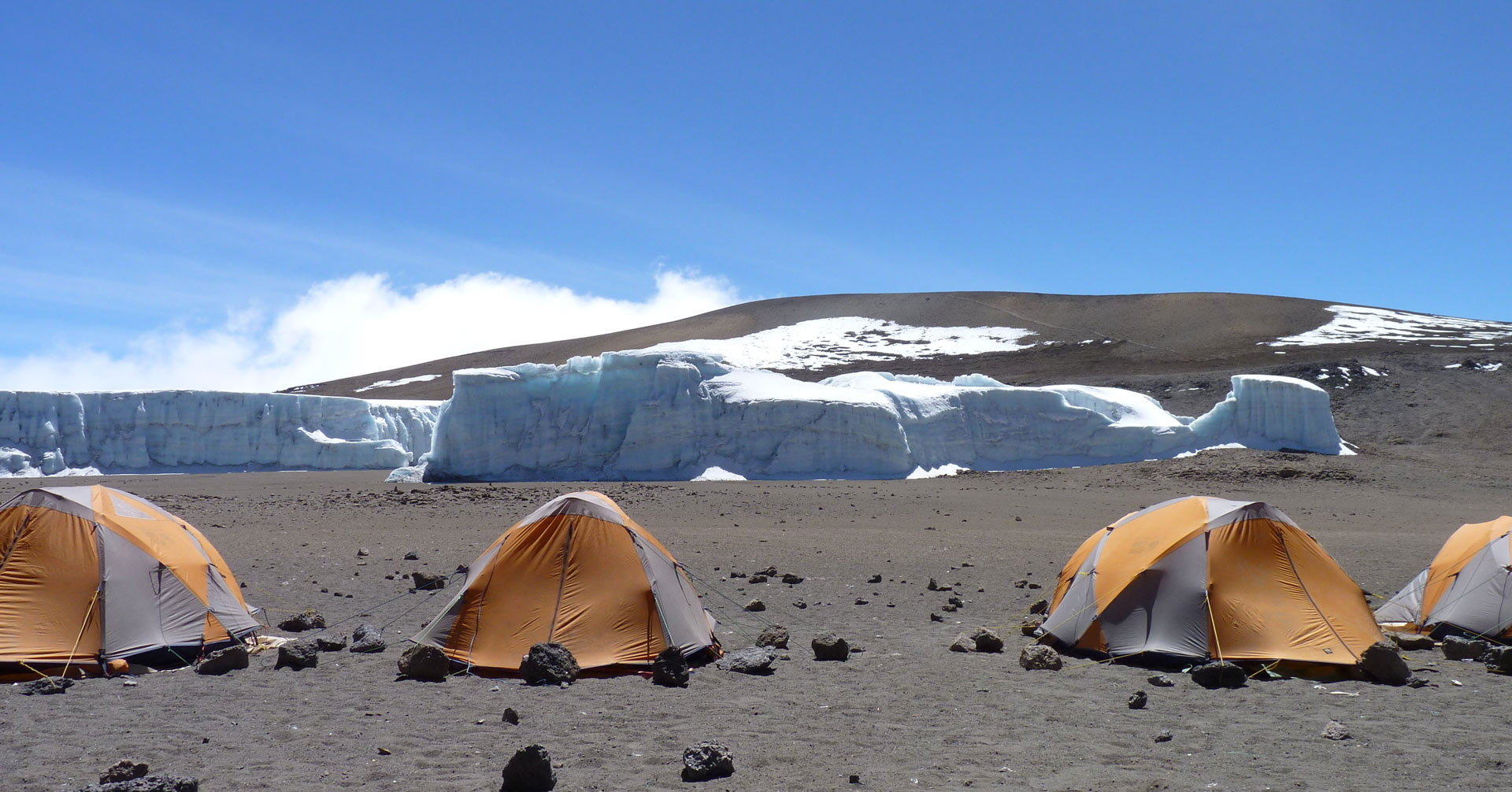On average, how many hours do you trek on Kilimanjaro per day?
The average trekking hours per day on Mount Kilimanjaro can vary depending on the chosen route and the individual pace of the climbers. However, a typical day on the mountain involves trekking for about 4 to 7 hours. Here is break down of the amount of time you would spend trekking Kilimanjaro on each day as suggested by our lead guide, Hamisi Bakari (HB):
- Initial Days: On the first few days, trekkers usually hike for 4 to 6 hours each day. This helps with acclimatization and eases the body into the trekking routine.
- Mid-Trek: As the trek progresses and the altitude increases, daily trekking hours often range from 5 to 7 hours. The pace may slow down to accommodate for the altitude and steeper inclines.
- Summit Day: On the day of the summit attempt, trekking hours increase significantly. Climbers may start around midnight and trek for 10 to 14 hours in total (6-8 hours to the summit and 4-6 hours descending to the nearest camp).
Summary of Daily Trekking Hours:
- Initial Days: 4 to 6 hours
- Mid-Trek: 5 to 7 hours
- Summit Day: 10 to 14 hours
These averages are general estimates, and the actual trekking hours can vary based on the route, weather conditions, and individual fitness levels.
Longer routes give you a high summit chance
Research data indicates that out of the more than 50,000 climbs, fewer than half make it to the peak of Mount Kilimanjaro.
As indicated in our previous article, the route you choose will affect your chances of reaching the summit, so choosing the ideal route for you is key to accomplishing your goal of reaching the summit of Kilimanjaro.
Longer days can allow you plenty of time to acclimatize, and the crew members have ample time to set up camp at a lower altitude while you’re trekking.
Only 34% of climbers are reported to make it to the top. On travels lasting 6 days, the percentage rises to 47%; on routes lasting 8 to 9 days, it rises to 80%.
What are the best routes with the ideal number of days
We usually recommend the Lemosho route on 8 days as the best overall route. This route is scenic, and affordable, and gives you optimum time for acclimatization. it is a newer and improved route on the Mountain so is the Northern Circuit Route which takes a duration of 9 days.
How long are the trails on Kilimanjaro?
You shouldn’t choose the shortest trails to reach the peak. The ideal path for beginners to climbing Mount Kilimanjaro is the Lemosho, Rongai, Northern Circuit, and Machame routes, which may be reached in 7 to 9 days or the Marangu Route for 6 days will still give you a good time for acclimatization.
| Route | Number of Days | Route Length |
|---|
| Marangu Route | 5 or 6 | 64 kilometers (40 miles) |
| Umbwe Route | 6 | 37 kilometers (23 miles) |
| Rongai Route | 6 or 7 | 65 kilometers (23 miles) |
| Machame Route | 6 or 7 | 49 kilometers (30 miles) |
| Lemosho Route | 7 or 8 | 66 kilometers (35 miles) |
| Northern Circuit | 8 or 9 | 66 kilometers (35 miles) |
Advantages of taking longer routes to climb Kilimanjaro
The longer the route, the more days you will spend on the mountain, also the higher your chances are of reaching the summit. What it means is that for a high summit success rate, choose longer routes. You have a higher chance when you choose the 9-day Northern Circuit route than choosing the 5 days Marangu Route unless if you are an expert mountaineer. Why are the longer routes better than the shorter routes, you may ask? The reason is mainly that the more days you have on your route of choice, the more time you have to acclimatize.
That is why Tranquil Kilimanjaro recommends longer routes that take a duration of about seven to nine days because they give you enough time for acclimatization. Acclimatization is important in reducing and avoiding altitude sickness (AMS).
There are eight main routes leading to the top of Mount Kilimanjaro. All routes have been designed and developed to facilitate gradual acclimation in the lead-up to the peak. This is achieved through the “climb high, sleep low” philosophy, which works by preventing the possible onset of altitude sickness. While all routes are designed to guarantee optimal acclimatization, the 6 traditional routes available in the Tranquil Kilimanjaro company offer different hiking duration options based on different routes. The shortest itinerary provided by us for the mountain is the Marangu Route, which requires only 5 days / 4 nights. The longest route is the Northern Circuit, which requires 9 days / 8 nights. However, it is essential to know that although the Umbwe Route is the shortest, it is also the least recommended.
In no way is Mount Kilimanjaro a race over the peaks, but it is a real challenge that can become more difficult to face and “digest” if you are not adequately acclimatized to the altitude. Breathing in more than 5000 meters of height can be a test, so even if you are a physically fit person with experience in trekking, being adequately acclimated is a crucial factor. The longer hiking routes of Mount Kilimanjaro always provide for some rest days to allow tourists to let their bodies adapt gradually to the thin air at the peak. In addition, it is essential to keep the daily effort in check and observe how the body responds to altitude, reducing the risks of related problems as much as possible.
Climbing Mount Kilimanjaro is a real challenge, but many people are not well aware of all the elements they need to consider when it comes to planning a trek. One of these crucial factors is duration, which is important for a safe and enjoyable hike. If you are wondering why it is important and how going for a shorter trek may not only help your group’s overall chances of summit success, but also make it more enjoyable for each individual, then this article is for you!
In fact, most people climb Kilimanjaro over the course of either 6, 7, or 8 days. This is hardly surprising, considering Kilimanjaro is one of the world’s highest freestanding mountains, and hiking from the base to the summit would be almost impossible in a day. In addition, climbers hiking every day from the trailhead to the summit would not have sufficient time to acclimatize, and that can lead to altitude sickness and, in extreme cases, death.
The vast majority of people climbing will take between 5-9 days, which is what is considered typical. From all the statistics I have found and through our first-hand experience, most choose to take 7 days to climb. The only other noticeable rates are 6- and 8-day climbs. It’s not that anything less than 8 days is asking for trouble, but a longer time to get up to acclimating elevation will again put you in a safer place if you need to be on the mountain longer due to the risk of suffering altitude sickness. Therefore, never be in such a hurry that you rush your climb. The longer and slower you can go, the better your body will be able to handle the drastic increase of altitude present on the mountain. The typical gain from gate to the summit in a 5-day climb is 3,980m (13,200 ft), whereas a 9-day climb is an increase of 4,610m. You may ask yourself why take the risk, especially if you have already booked such a short climb, but sometimes unforeseeable events may occur in which your body may really benefit from a longer climb.
Remember, if anything goes wrong due to your slow hiking and you insist on continuing, it may have very bad effects and you may end up facing the same consequences if you’re not careful. Also, if your friends witness your descent due to the same problem, it can cause morale to decrease within the team. The team may be forced to continue, which is the biggest mistake when climbing to the summit. Keep in mind that safety is your humble responsibility during the hike. Be realistic and negotiate with your companions for a descent until your body reacts normally for the next schedule.
Several factors can affect the duration of climbing Mount Kilimanjaro, including:
- Chosen Route: Different routes on Kilimanjaro vary in length and difficulty, which can impact the duration of the climb. Longer routes typically require more time for acclimatization and gradual ascent, while shorter routes may allow for a quicker ascent but may not provide adequate time for acclimatization.
- Acclimatization: Acclimatization is crucial for climbers to adapt to the high altitude and reduced oxygen levels encountered on Kilimanjaro. Longer itineraries with additional acclimatization days allow climbers to ascend gradually, reducing the risk of altitude-related illnesses and improving chances of reaching the summit.
- Fitness Level: The fitness level of climbers plays a significant role in determining the duration of the climb. Those who are physically fit may be able to cover longer distances and ascend more quickly, while less fit climbers may require additional time and rest breaks.
- Individual Pace and Preferences: Each climber has their own pace and preferences when it comes to climbing Kilimanjaro. Some may prefer a faster ascent with fewer rest breaks, while others may prefer a slower, more leisurely pace with additional time for sightseeing and photography. Customized itineraries can be tailored to accommodate individual preferences and requirements.
How many hours do you need to climb Kilimanjaro?
Experience shows that about 80-90% of the hikers to the mountain need at least 168 hours to finish the trip, starting at the base and then returning to the hotel. This is due to the adverse effects of high elevation on the body, which can result in reactions such as headache, dizziness, fever, shortness of breath, and difficulty sleeping. In the worst-case scenario, it can even lead to death. I strongly advise leaving the normal people behind when their companions have health problems on the mountain. They should be collected by one of the descent guides and carried as quickly as possible to the last camp, then assist the affected trekkers in descending to a safe point. The guide should also contact the emergency rescue company for backup, who will assist in transporting the patient to the hospital for proper assistance.
Climbing Mount Kilimanjaro or any other mountain is a lifestyle change exercise and requires some preparations prior to the trip, such as daily walking, visiting the gymnasium, and engaging in other sports activities to build your body strength and fitness.
The minimum duration advised to climb Kilimanjaro is 6 days to be safe to complete the climb and preserve the acclimatization process effects on the body. However, we have a group of people who want to shorten the trip time to fit their vacation plans or for those who are strong enough to hike fast without any problems. We also have hikers who want to go slower and have more days to relax during their hike and save energy for the summit attempt. With the slower hikers, it’s preferred to book an extra day or at least customize the itinerary to match your friends’ pace.
How many days is it to descend Kilimanjaro?
The journey down Kilimanjaro from the summit of Uhuru Peak to the finish line takes about two days. Depending on the route and the experience of the trekkers, the descent may take up to 5 hours to reach the camp for the night and 4 to 6 hours the following day. Only two routes are used to descend the mountain. The Mweka route is used by all routes to climb down the mountain except the Rongai Route and the Marangu Route which use the Marangu Route to descend.
Which short route is the best to climb Kilimanjaro if I have limited time?
If you have limited time, at least choose the Marangu Route for 6 days which is the most popular and best option for people with little time on their hands. It is also the most affordable route on the mountain and does not use camping as a form of accommodation, instead, you will sleep in dormitory-styled huts.
What is the duration for the longest route on Kilimanjaro?
The longest routes like Northern Circuit, and Grand Traverse take 9 good days to climb from start to finish, and another long route, Lemosho, takes 8 days to trek from the beginning to the end. Coincidentally, these long routes have the best summit success rate but do you know why? It is because the give you enough time to acclimatize on the mountain, this makes reaching to the summit (Uhuru Peak) easier.
Who should take the shorter routes to climb Kilimanjaro?
Some people would prefer the shorter routes due to a limited budget or limited time but we recommend the longer routes because, at the end of the day, safety and enjoyable adventures come first.
However, it is fine for experienced climbers and expert mountaineers to take shorter routes that range from five days to six days.
Longer routes that take more days to complete are a guaranteed way to reach the summit and come with a higher success rate. Not only that, but they are also safer too and more scenic. safer,
It is common sense to take care of your body and not allow it to strain and expose it to stress or even put your health at risk?
Below are the Kilimanjaro success rates in accordance with how long it takes to climb Mount Kilimanjaro.
All climbers, all routes 45%
All climbers, all 5 day routes 27%
All climbers, all 6 day routes 44%
All climbers, all 7 days routes 64%
All climbers, all 8 day routes 85%
All climbers, all 9-day routes (90%)
Kilimanjaro World Records
Speed: Is it possible to climb Kilimanjaro in a single day or in a few hours? Yes, but not just anyone. Professionals and athletes to be precise can only do it. These people that smash these records have put in so much practice that is why it sounds so unreal. They have undergone extreme acclimatization by camping at high elevations for days until they get used to breathing in thin oxygen levels under the harshest conditions. Because of this, they can get away with not having the effects of altitude sickness.
Below are some of the records broken for climbing Mount Kilimanjaro in the speed category.
Fastest Summit (2014) – Karl Egloff of Switzerland reached the peak of Kilimanjaro in a whopping 4 hours 56 minutes. He completed the whole trip in 6 hours 42min making it also the fastest ascent and descent.
Fastest Summit by a Female (2018) – Kristina Schoou Madsen of Denmark CLIMBED it to the summit of Kilimanjaro in a record 6 hours 52 minutes.
Fastest Unaided Ascent and Descent (2006) – Simon Mtuy of Tanzania made it to the top of Kilimanjaro and back in a record 9 hours and 19 minutes without any help as he carried his own food, water, and gear.
Age: Mount Kilimanjaro being a walkable mountain and having a gradual slope, allows people of all ages to take up the challenge of climbing it. Young children and old folks alike have all graced this giant of a mountain. Despite the recommended age limit for kids is 10 years and above, there are exceptions of human beings that display exceptional abilities like the records below broken by age category.
Oldest Climber to Summit (2019) – Anne Lorimor of the USA Lorimor and seven others embarked on their journey to the summit on 12 July 2019 and used the 9 Days Rongai Route. Lorimor completed the Kilimanjaro climb without oxygen(cylinders) or artificial aids.
This was her second time climbing Kilimanjaro in her 80s, having already climbed when she was 85 years old but Angela Vorobeya from Russia broke her record in the same year. She returned to climb Kilimanjaro and reclaim her record at the age of 89 years old,
Second Oldest Climber to Summit (2017) – Fred Distelhorst of the USA is the second oldest man to climb Kilimanjaro to the summit at age 88.
Second Oldest Female to Summit (2015) – Angela Vorobeva of Russia is the second oldest woman to climb Kilimanjaro at 86 years old.
Youngest Climber to Summit (2018) – Coaltan Tanner of the USA climbed to the top of Kilimanjaro at just the tender age of 6 years old.
Youngest Female to Summit (2018) – Montannah Kenney of the USA also climbed Kilimanjaro at 7 years of age to become the youngest female to the summit before Coaltan Tanner beat the record, young Montannah was the previous record holder.
In conclusion to climb Mount Kilimanjaro, normally it takes 5- 9 days, the longer the route, the higher the chances of making it to the top.
